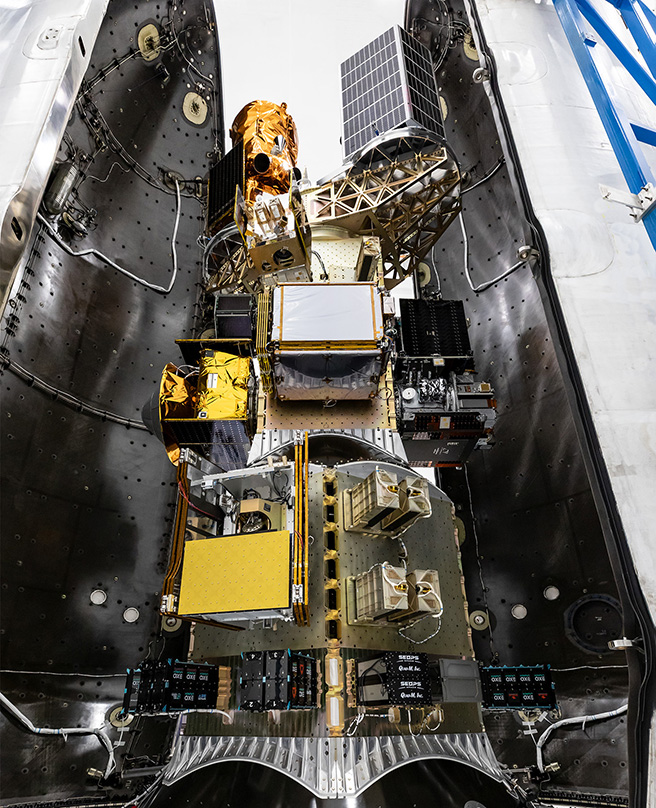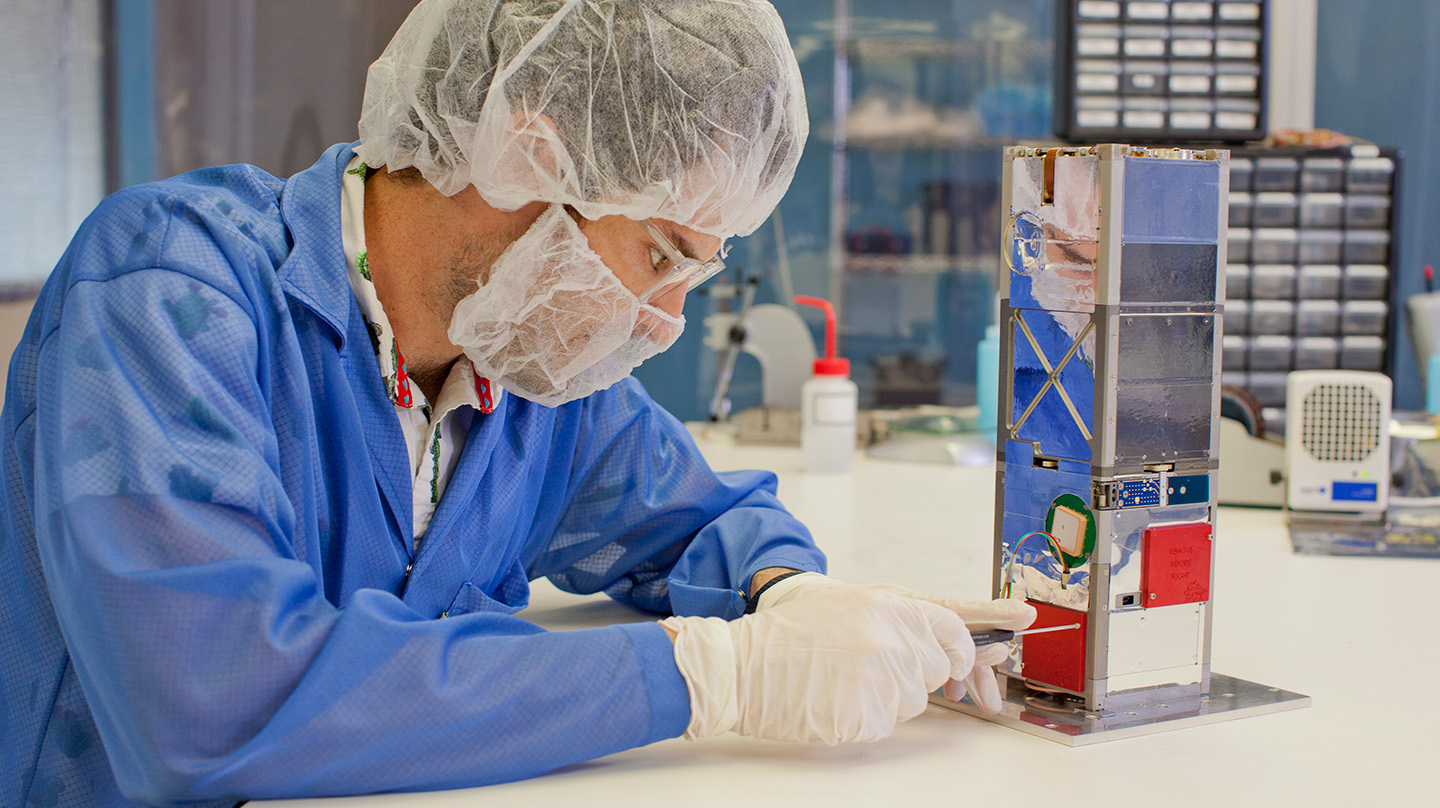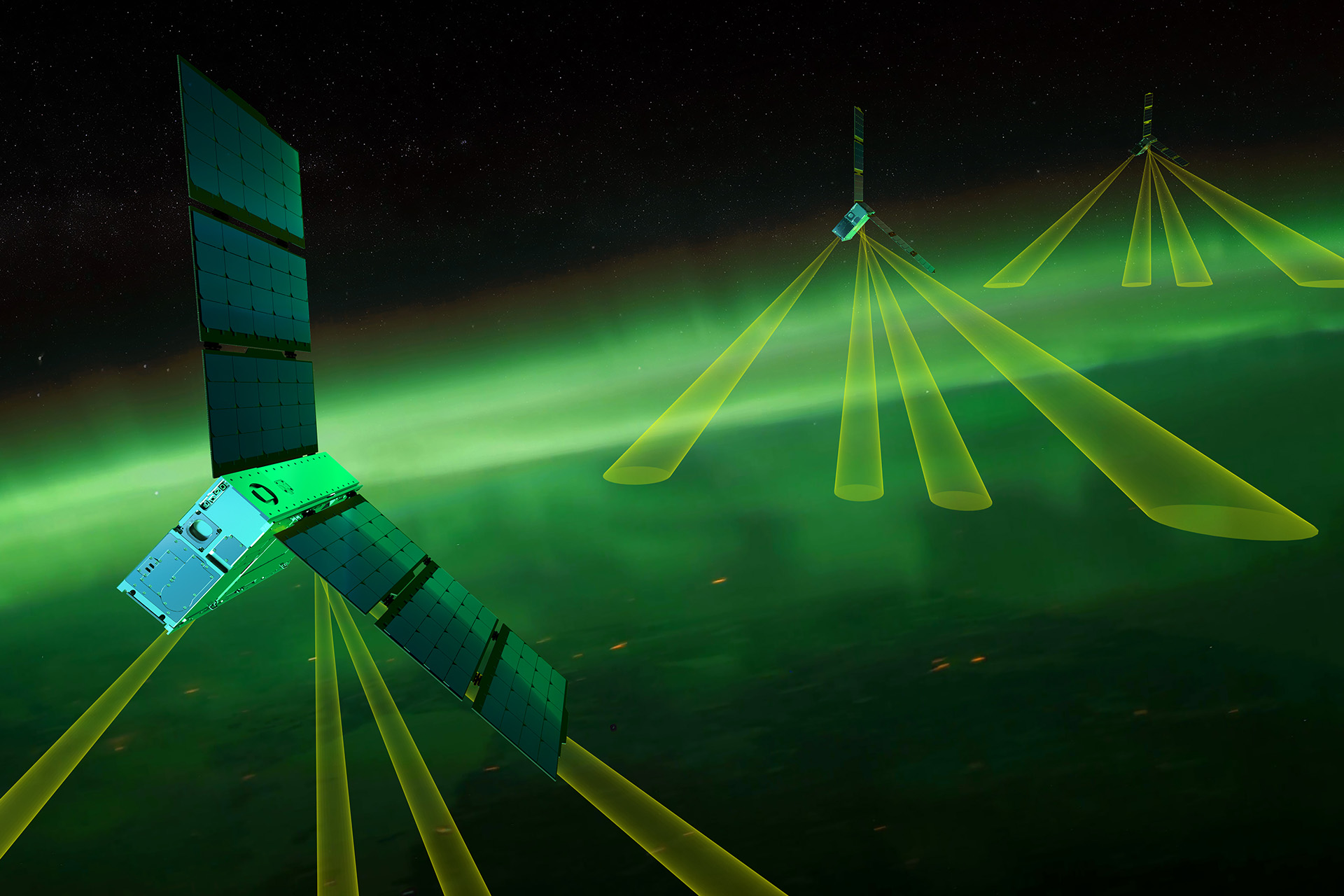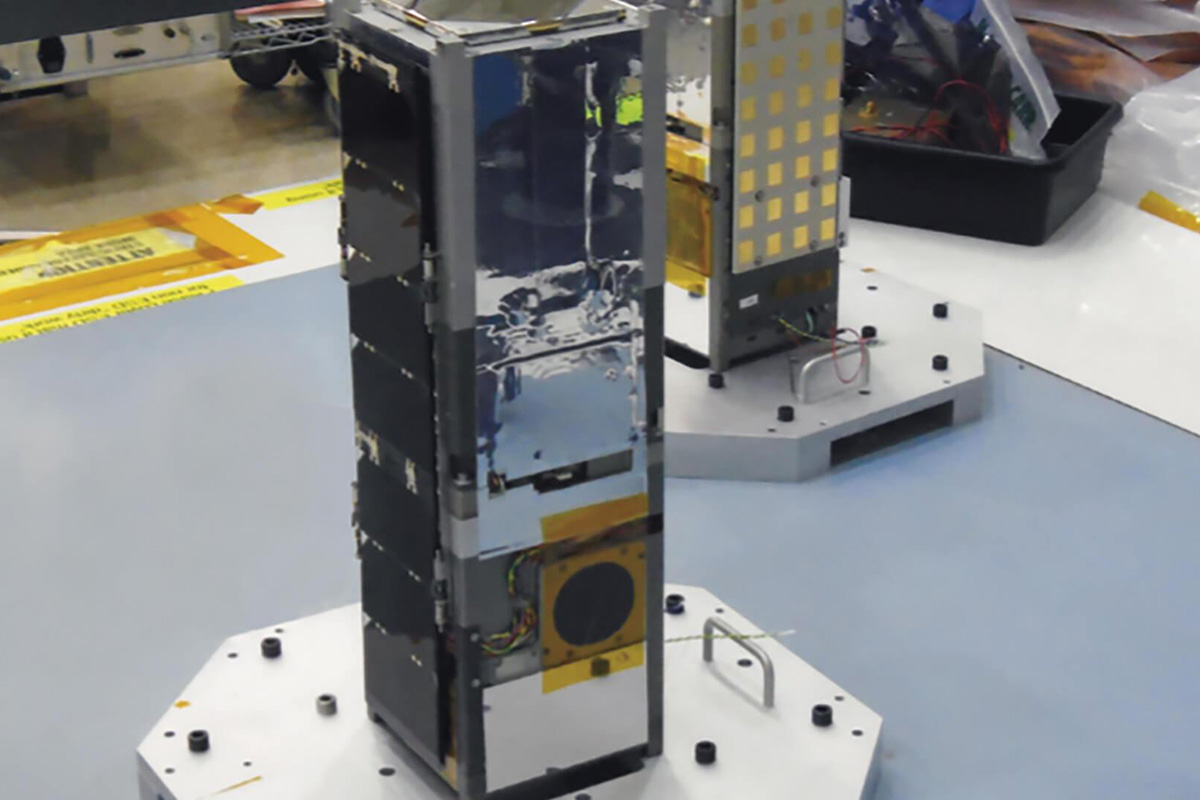Press Release
Commercial Collaborations Enable Agile, Reliable Space Solutions
Audio generated using AI voice technology.
The launch of NASA’s Electrojet Zeeman Imaging Explorer (EZIE) in March marked the beginning of a 16-month mission to study Earth’s auroral electrojets in a low-orbit experiment to answer important questions about the electrojets’ structure and evolution as well as solve mysteries about space weather.
This groundbreaking mission also represents the latest successful partnership between the Johns Hopkins Applied Physics Laboratory (APL) in Laurel, Maryland, and a commercial space firm — in EZIE’s case, Blue Canyon Technologies (BCT) in Lafayette, Colorado, part of RTX, the world’s largest aerospace and defense company. For nearly a decade, these organizations have collaborated on agile, reliable solutions that have enabled faster and more cost-effective missions across the space science and national security sectors.
This work exemplifies how APL teams with industry to accelerate innovation that benefits and protects the nation.
“The extreme challenges of operating reliably in space demand creative and resourceful solutions,” said Bobby Braun, head of APL’s Space Exploration Sector (SES). “Our collaboration with commercial space firms confirms what can be accomplished when organizations combine strengths with a shared vision.”
Technological Teamwork
APL and BCT first collaborated on the Radiometer Assessment using Vertically Aligned Nanotubes (RAVAN), which launched in 2016 and successfully collected and delivered data on Earth’s radiation imbalance, a key measurement for predicting changes in Earth’s climate.
The NASA mission was led by APL, with Blue Canyon building the small satellite — or CubeSat — used in the project, as well as managing operations from its headquarters in Colorado.
APL’s Bill Swartz, principal investigator for RAVAN, said the combination of APL’s mission experience with BCT’s commercial small spacecraft mindset was key to RAVAN’s success. Steve Stem, technical director of CubeSats at BCT, said RAVAN was “instrumental” in the company’s foundation.
“Blue Canyon Technologies was founded by aerospace veterans who saw the New Space revolution coming and positioned the company to utilize industry experts to revolutionize aerospace by significantly reducing cost while adhering to those processes that directly influence the success of a mission on orbit,” Stem said. “APL helped BCT by advising our teams on how to improve our product while also being flexible and not overly prescriptive on our implementation approach.”
Three years after RAVAN launched, APL and Blue Canyon teamed up to launch the CubeSat Assessment and Test (CAT), two solar-powered CubeSats carrying a radio frequency payload into low Earth orbit.
“The CAT mission proved that we could integrate and fly complex CubeSat systems quickly and effectively,” said SES Managing Executive Kris Fretz, who worked on the CAT mission. “That success laid the groundwork for even more ambitious efforts.”

Credit: SpaceX
The latest effort was EZIE, which features a trio of CubeSats flying in formation approximately 370 miles (590 kilometers) above Earth’s surface to map the auroral electrojets. APL leads the mission for NASA, and BCT provided the three small spacecraft. This team advanced EZIE from selection by NASA to flight in just three years.
“The EZIE mission, with its three-spacecraft constellation, is a great example of how an experienced space research and development institution can align with a nimble commercial firm to launch a fast-paced mission with an innovative scientific approach,” said Nelli Mosavi-Hoyer, project manager for EZIE at APL. “Together, we’ve achieved more and moved forward faster.”
Expertise and Innovation
Stem credits APL’s domain expertise in design and assurance for helping accelerate Blue Canyon’s development. Stem also notes that BCT has helped APL become more agile while maintaining expectations and standards for how space missions are executed.
“APL is always on the cutting edge of aerospace in both civil and defense applications,” he said. “Blue Canyon’s on-orbit success and class-leading guidance, navigation and control performance are a perfect fit with APL, and we hope to continue this relationship for a long time to come.”
EZIE is just the latest example of APL’s success collaborating with commercial partners. The Lab is working with Lunar Outpost of Golden, Colorado, and Intuitive Machines (IM), of Houston, on Lunar Vertex, a mission to study “magnetic anomalies” on the Moon in order to learn more about conditions on the lunar surface and in other airless worlds in the solar system.
APL also signed a cooperation agreement with IM in 2024 to partner on providing safe, secure and reliable communications and navigation infrastructure in cislunar space.
Previously, APL worked with Rocket Lab, of Long Beach, California, to commercialize the Frontier Radio, a breakthrough space communications technology invented at APL that has served as a critical component for multiple NASA and international space missions, including those that have studied the Sun and revealed the mysteries of Pluto.


